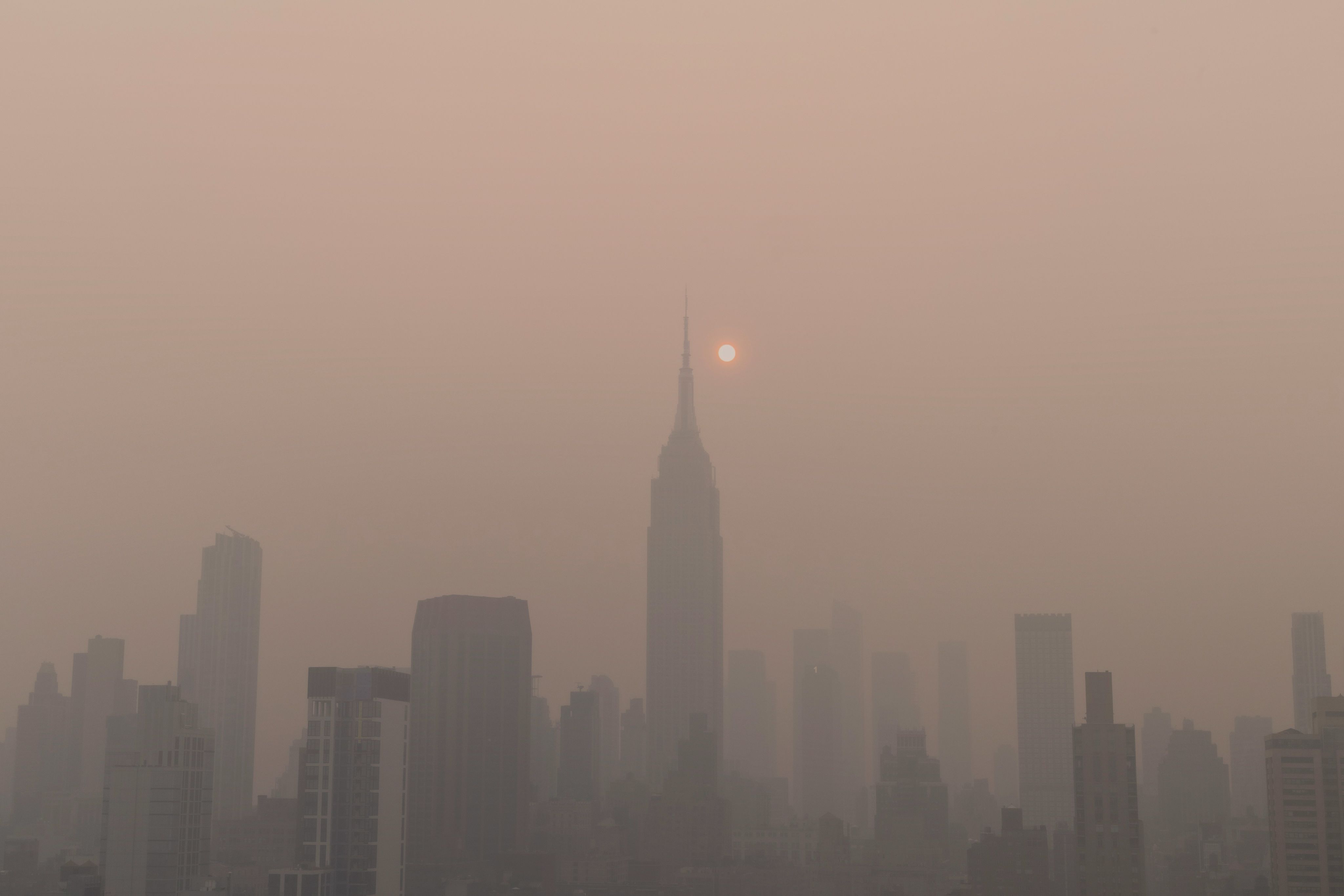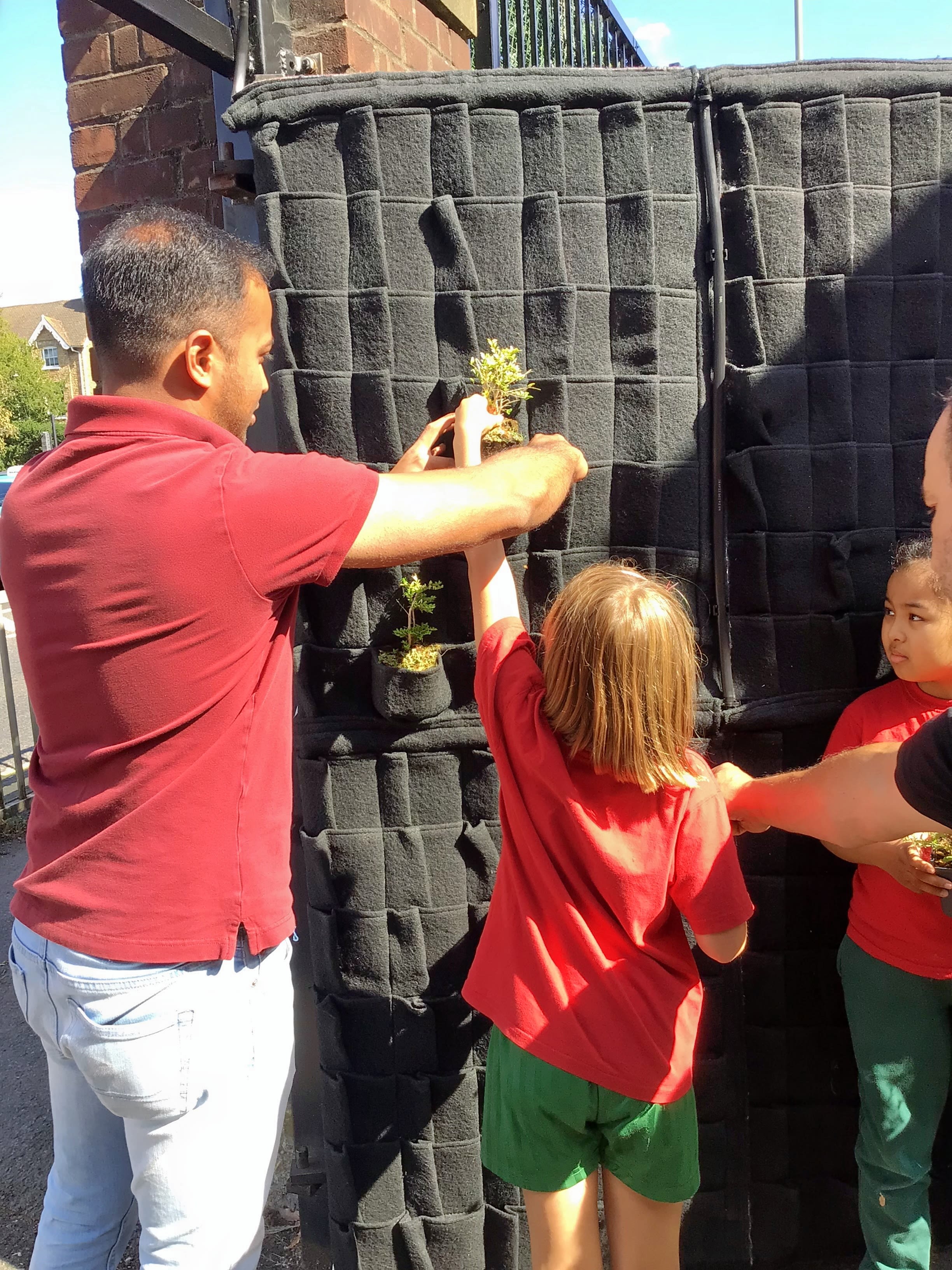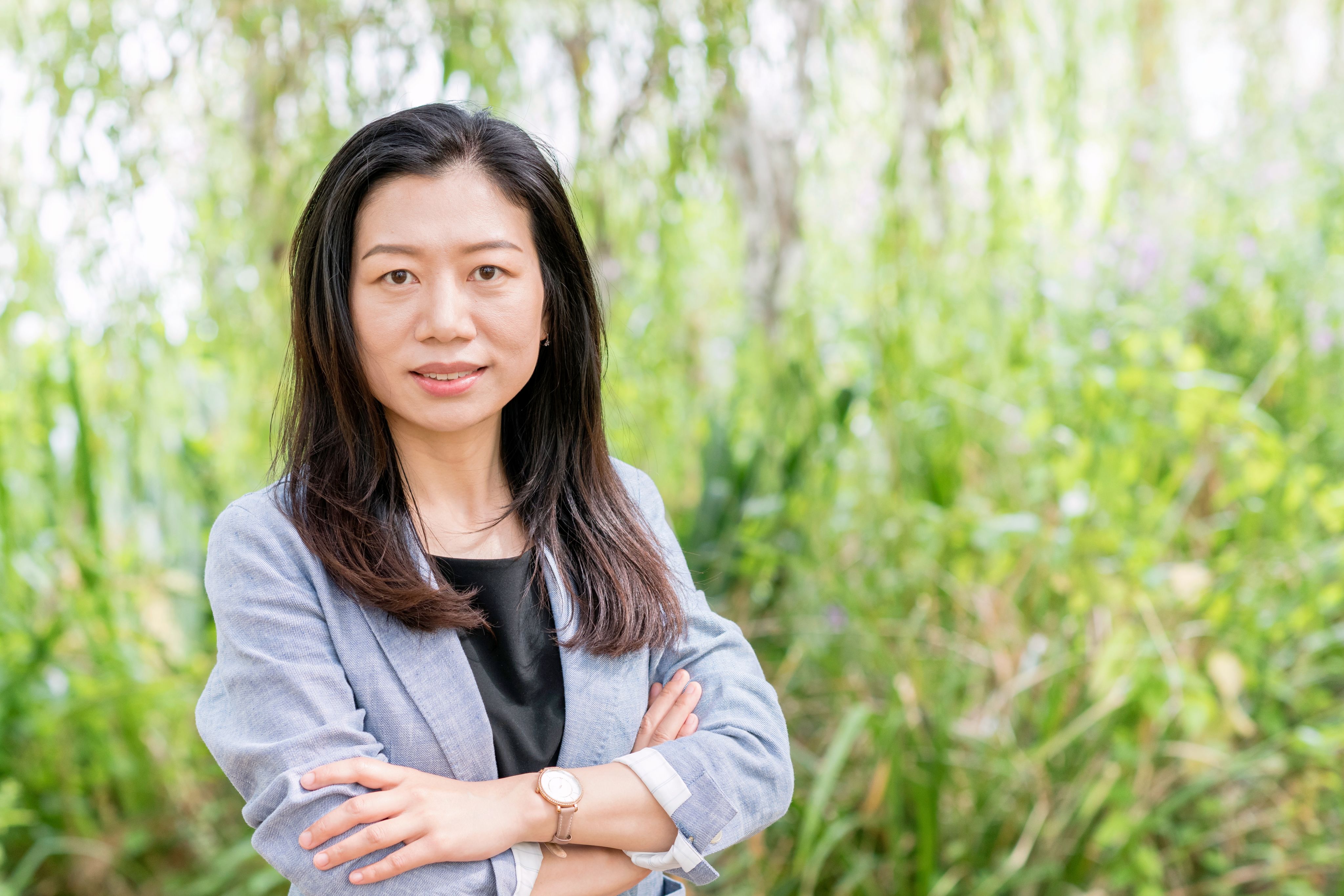
We all breathe the same air...





'Clean air for all' is the vision statement for one of the world's leading research hubs focused on air pollution. It is located here at the University of Surrey – the Global Centre for Clean Air Research (GCARE).
The statement comes from a phrase that is part of our everyday lexicon, intended to emphasise how not-so-different we all are:
'We all breathe the same air.'
The phrase can be traced back to one of the most inspirational orators in history.
After the Cuban Missile Crisis, President John F Kennedy sought to de-escalate tensions between the United States and the Soviet Union by giving his now-famous "A Strategy For Peace" speech. Given as a commencement address in 1963 at the American University, Washington DC, he offered what was at the time a striking olive branch to the Soviet Union and its allies:
So, let us not be blind to our differences--but let us also direct attention to our common interests and to the means by which those differences can be resolved. And if we cannot end now our differences, at least we can help make the world safe for diversity. For, in the final analysis, our most basic common link is that we all inhabit this small planet. We all breathe the same air. We all cherish our children's future. And we are all mortal.
'We all breathe the same air."
"But is it true?" questions Professor Prashant Kumar, Founding Director of GCARE at the University of Surrey's School of Sustainability, Civil and Environmental Engineering. "I understand and admire the sentiment. However, my life's work is about questioning the very premise of what the former President was suggesting.
"And I'm afraid the answer is no. We do not breathe the same air. Many people on our planet, most of them vulnerable, breathe air that is considerably more dangerous."
Dangers in the home...




"I believe that the problem is so considerable that we, as human beings, naturally belittle what it will take to overcome it," suggests Professor Kumar. "One of the problems is that when people think about air pollution, they naturally think of ambient (outdoor) air pollution."
Professor Kumar believes not a lot of attention is paid to indoor air pollution. According to the World Health Organization (WHO), more than 2 billion people around the world – a third of the global population – cook using an open fire or stoves fuelled by biomass (wood, animal dung, crop waste), coal and kerosene, which, of course, generate harmful air pollution.
Indoor air pollution is responsible for 3.2 million deaths per year worldwide, including 237,000 deaths of children under the age of five.
"In developing countries and vulnerable areas around the world, women and children, who are responsible for daily tasks like cooking, are the ones to face the heaviest health risks from indoor air pollution," continues Professor Kumar. "This means that they are the ones who are exposed to the real risks of noncommunicable diseases such as stroke and lung cancer."
"This is yet more evidence that we do not all breathe the same air. I grew up in a small Indian village and saw loved ones cook with less than ideal methods," explains Professor Kumar.
"So this issue is close to my heart, and that is why we developed and published the Kitchen Pollution Guidance and other public resources, including public engagement tools and policy briefs. Because, at a fundamental level, sharing our scientific knowledge with not only the leaders in these communities but the very people affected could very well save lives."
The Guidance, which is available in 17 languages, including Mandarin, Spanish, Kurdish, Arabic and Hindi, provides easy-to-implement recommendations to help reduce kitchen-related air pollution. Professor Kumar has spoken about his research in the UK Parliament, and to policy makers around the world.
It covers a wide range of topics: how to promote healthy ventilation practices, keeping people out of the kitchen who don’t have to be there when cooking, and crucially, helping people use healthier cooking methods to reduce the use of frying, which causes a lot of the harmful pollution in the kitchen.
“We have seen the guidance adopted by the Egyptian government,” says Professor Kumar. "I am acutely aware of how difficult some of our recommendations will be in communities where some people will simply not have a choice but to cook in a certain way. Or many women find themselves in a position where they have no choice but to juggle cooking duties with the care of children.”
“But I very much see the Guidance as a first step in the right direction. A flag in the sand.”
From another perspective ...





Some of Professor Kumar's most famous work is his series of papers looking at children and babies’ exposure to air pollution.
The first of the studies came out in 2017, when the GCARE team placed air quality monitors inside baby prams and pushed them along a 2.5km route. The monitors helped the team measure air pollution particles of different sizes.
"We tried to replicate a school run to a local Guildford primary school," remembers Professor Kumar. "We only went out during weekdays on 32 round trips – 17 in the morning and 15 in the afternoon."
In several of the trips, the adults also carried air quality monitors to help the research team compare results.
"What we found shouldn't have shocked us. It shouldn't have shocked anybody," Professor Kumar explains. "But I know it did. What I have realised looking back is that those studies were about perspective – making us adults think about the situation from the baby's point of view.
"Babies in prams are exposed to a significant amount of pollution, especially during the school run, with traffic intersections and bus stops being the worst spots.
"We found that the air babies breathe can contain higher levels of harmful fine particles in the morning, while coarser particles increase in the afternoon."
The first of these studies did not set out to compare the air babies breathe with that of the adult pushing them. In fact, one of the limitations of the study was that adult air pollution levels were not consistently measured. However, this was addressed as the GCARE team looked to refine their methods and, like all reputable scientists instinctively do, repeat their findings.
In 2020, the team redoubled their efforts – this time monitoring air quality in single and so-called double-decker prams.
This time the team measured pollution along a 2.1 km route, with 89 trips taken during school drop-off and pick-up times. This time, crucially, air pollution at adult height was a consideration from the very beginning. And the study also tested how pram covers affected pollution exposure by comparing the levels with and without covers.
"Unfortunately, we confirmed our previous study's results. Babies in prams are indeed exposed to harmful air pollution," Professor Kumar said. "What was different this time around was that we found that babies were exposed to more pollution than adults, especially when they are near traffic."
Professor Kumar’s work has globally shaped strategies for urban greening strategies to reduce roadside pollution and other hazards such as overheating and flooding.
The team found that when it comes to double prams, the child in the lower seat experienced higher pollution levels than the one on the top. They also found that pram covers helped reduce fine and coarse particles – but their results were quite mixed when it comes to ultrafine particles.
"We can now tell parents and carers that if they are pushing a pram near traffic they should try where possible to raise their child’s seat as high as possible and use a cover," says Professor Kumar. "This knowledge adds extra weight when we support our community in making better decisions for their babies."
In our classrooms...




In 1967, the future American President, Governor Ronald Regan of California, was signing the Mulford-Carrell Air Resources Act. This committed the state of California to a unified approach to tackling air pollution in the state. And out of that act, the California Air Resources Board came into being.
The Board are the administrator of what is widely considered the Nobel Prize in air quality – the Haagen-Smit Clean Air Award – and in 2024, Professor Prashant Kumar was named as a recipient of this award.
"It's truly an honour,” remarked Professor Kumar, “that wouldn't have been possible without colleagues here at Surrey, GCARE, and at institutions around the world.
"While I confess I have taken a moment here or there to celebrate and feel satisfaction, it has also brought into focus how much is yet to be done. Climate change, of course has not been solved. And growing inequalities only make it harder for the most vulnerable in our communities to have access to clean and safe air.
"There is just so much to be done."
Closer to home, Professor Kumar and GCARE colleagues have been changing the way policymakers view indoor air quality in children's classrooms.
In one study, GCARE looked at 60 classrooms across 10 schools in London, measuring pollution, humidity, temperature and carbon dioxide levels.
In this study, the researchers found that the simple act of opening the windows could reduce air pollution. Coarse pollution particles were reduced by a further 30% when this natural ventilation was combined with mechanical ventilation – through ducts, vents and fans. They found that classrooms with hardwood floors had twice as much coarse pollution in the air than carpeted rooms. Daily sweeping could improve this, however.
In another study looking at primary schools in Guildford, they found that using air filters and opening windows could improve air quality in classrooms by 36%.
In another London school intervention study, Professor Kumar's team recommended comprehensive indoor and outdoor measures to protect children from pollutants. Air purifiers in classrooms cut indoor pollution by 57%, the School Streets initiative lowered particle levels by 36%, and green screens reduced outdoor road particles by up to 44%.
This series of research projects is having a real-world impact, according to Professor Kumar; "We found out that our work was instrumental in influencing the Mayor of London to trial the use of 200 air filters across classrooms in the capital. This is quite exciting, and it's exactly why we do what we do – for that knowledge to improve the lives of the most vulnerable in our community."
GCARE's pioneering research has been distilled into simple take-home guidance for schools, and it has now been adopted in over 20 countries.
What comes next?





In 2022, the University of Surrey opened the doors to its Institute for Sustainability, of which Professor Kumar is a founding co-Director. The Institute launched the Air Pollution research programme, dedicated to exploring the complex challenges linking indoor and outdoor air quality, people's health and the environment. The programme and the Institute place the United Nations' Sustainable Development Goals at the heart of everything that it does.
"Prashant, through our programme and GCARE, places some of the most vulnerable members of society—such as children and the elderly—at the core of his research. He works locally to show that schools and care homes need green infrastructure to reduce the impact of air pollution. By sharing his findings, we ensure the benefits reach vulnerable populations worldwide, far beyond Surrey," says the Institute's co-founder, Nathalie Hinds.
Dr Melis Duyar from Surrey's School of Chemistry and Chemical Engineering is one example of the University's exciting, outside-of-the-box thinking.
"In a nutshell, we want to capture carbon dioxide and create something new and sustainable from it – whether new fuels or commercial products," explains Dr Duyar.
Melis is leading a project at Surrey that is looking to capture CO2 directly from the air and use dynamic catalysis to create methanol - a valuable chemical that, made this way, could be carbon-negative. Its value could offset the cost of direct air capture.
Meanwhile, Dr Bing Guo from the School of Sustainability, Civil and Environmental Engineering is part of a project that is looking to improve the monitoring of wastewater treatment works, which produce a substantial amount of methane and nitrous oxide.
"We don't yet have an accurate and affordable way to monitor these emissions," explains Dr Guo. "We want to solve this problem and create tools for the water industry to achieve net zero."
"A lot has changed since I arrived at Surrey in 2009," reflects Prashant. “The University is far more ambitious. There is so much creative and inspiring work happening on climate change – not just in my faculty, but across the University.
"The one piece of advice I would give up-and-coming academics is to shout about your work. The time of university researchers sitting in their ivory towers, expecting the world to understand, let alone appreciate their work, is over.
"Tell your community about your work, wherever it may be. Go to local events and tell them what you are working on. Design citizen science projects – I have found that working with local citizens through my initiatives such as the Guildford Living Lab is incredibly fulfilling.
"Do not do your work in secret if you can help it. Proudly tell the world why your research matters, and it will be of benefit to you, your work, and our sector. And with this better understanding and knowledge sharing is where I believe we will find lasting progress."